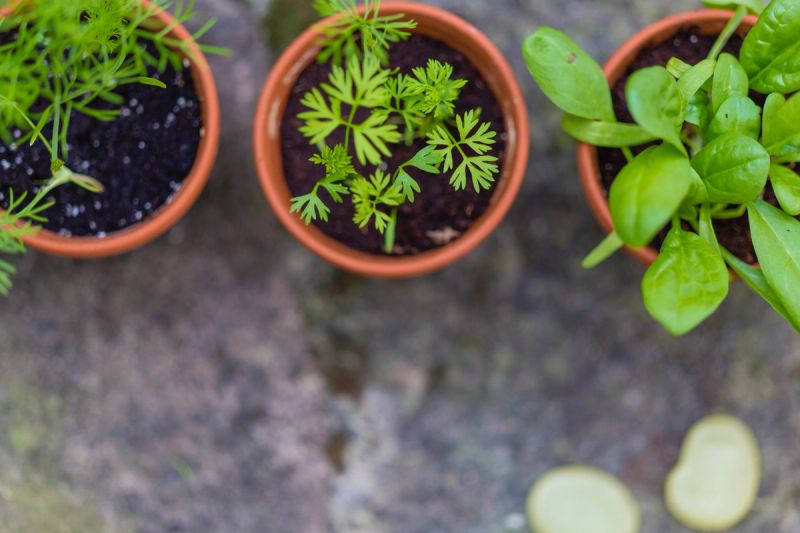How to keep a herb garden alive
A freshly planted herb garden is a beautiful thing. Keep the dream alive and ensure your plants stay in tip-top condition with a few simple tips and tricks.
How to care for a herb garden
Whether you’ve planted herbs in containers as part of a one-pot herb garden or keep them in individual containers, here’s a seasonal guide to keeping them alive.
Watering your herb garden
In Spring
Most likely, you've planted your herb garden in spring - it's the best time to do so because the weather's milder, and that's when they're most readily available.
Once planted, make sure they get off to a good start by watering them when the top of the soil is dry.
TOP TIP: herbs planted together will need less watering than those in their own pots or plants in the ground.
In Summer
As your herbs begin to romp away, add the occasional dash of plant fertiliser to your watering can, to make sure their leaves remain in the knick of health.
In Autumn & Early Winter
At this time of year, you'll want to start reducing the amount of water you give your herb garden as they start to go into hibernation. During this period, they'll require little water. It's also more likely to rain (especially in the UK) so don't water them if the weather's been wet.

Pruning your herb garden
In Spring
Woody Mediterranean herbs like rosemary, lavender, oregano thyme and sage all appreciate a trim in spring. Snip the stems back to a pair of leaves on around a third of the plant to keep things tidy. This will also encourage fuller growth and stop things from getting too gnarly.
In Summer
Starting picking. And keep picking. The more leaves you pick, the more leaves your plants will produce. They’re just good like that. Just be careful not to take off too much. As a rule of thumb never remove more than a third of the leaves at any one time. Your herbs need some reserves to keep on keeping on.
If you forgot to give your perennial plants (those that come back year after year) a prune in spring, there’s a second window of opportunity to tame them in late summer once their flowers have gone over.
In Autumn & Early Winter
Some annual herbs, like basil and coriander, only last a year and start to die back in autumn. Autumn’s a good time to harvest, then dry or freeze them so you can continue to live the good life until spring comes back around.
Once they’ve reached their demise, cut back these annual herbs to keep things healthy.
Winter can be cruel to herbs. If your garden has tender herbs like blackcurrant sage and lemon verbena, take it into a greenhouse or pop it on a windowsill indoors to ensure their survival.
What's wrong with my herbs?
Pesky pests and diseases
Herbs aren’t often bothered by pests or diseases. That said, keep an eye out for aphids on basil plants and rosemary beetle on woody shrubs. And don’t completely abandon Slug Watch. Some plants may succumb to grey mould if left in a spot that’s too humid.
Overpotting
Putting plants in pots that are too big for them can lead to bad juju. As a rule, only ever repot a plant into a container that’s one or two sizes up. Overpotting can stunt the growth of a plant and make it easier to accidentally overwater them. Watch out for yellowing leaves and those that wilt or drop.
Overwatering
Be careful not to smother your herbs. Wait until the top couple of centimetres of soil is dry before getting carried away with the watering can or they may start to rot at the base or wither.

Other ways to keep a herb garden alive
The niftiest trick in the grow your own herb book is to have multiples. That way, if a plant dies or you accidentally harvest too much you’ll always have a replacement to fall back on. Cunning, no?
If you’re sowing herbs from seed in spring, grow a few extras and keep them in the wings in case a plant in your herb garden throws a wobbly.
Autumn is the perfect time to take cuttings. This sounds tricky, but it isn’t (promise).
- Use scissors or a sharp knife and cut a handful of stems, each below a pair of leaves.
- Pull off the bottom sets of leaves and poke the stems around the edge of a pot of compost mixed with sand.
- Keep them in a warm place for a month or so and water them regularly. Voila! A whole new (cheap and cheerful) herb garden awaits.